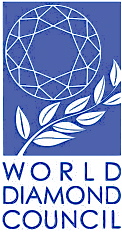 MAY 26, 2014 – Edward Asscher, President of the World Diamond Council, and Vice Minister Wei Chuanzhong, Chair of the Kimberley Process, signed a Memorandum of Understanding in Antwerp on Friday, May 23, formalizing the agreement for 2014 between the two organizations, according to which WDC finances and operates the Administrative Support Mechanism (ASM) on behalf of the Kimberley Process.
MAY 26, 2014 – Edward Asscher, President of the World Diamond Council, and Vice Minister Wei Chuanzhong, Chair of the Kimberley Process, signed a Memorandum of Understanding in Antwerp on Friday, May 23, formalizing the agreement for 2014 between the two organizations, according to which WDC finances and operates the Administrative Support Mechanism (ASM) on behalf of the Kimberley Process.
The ASM provides a variety of support services to the Kimberley Process, including the maintenance of an online electronic archive; the provision of communication services; logistical support for the KP Chair, chairs of KP Working Groups and ad hoc committees, including the organization of meetings and country review visits; and follow-through on training, data and requests for technical assistance. By definition the ASM is not a policy-making body; that is the prerogative of the Kimberley Process Plenary. Administrative in nature, the ASM operates in accordance with the instructions of the KP Chair and Working Group Chairs.
Since the ASM was launched in 2013, the task of managing the body has been divided among four WDC members: the Antwerp World Diamond Center, the Israel Diamond Institute Group of Companies, India’s Gem and Jewellery Export Promotion Council, and the Diamond House of the Government of Ghana.
The World Diamond Council was created in 2000 to coordinate the effort of the international diamond and jewelry sectors to eliminate the trade in diamonds from areas of conflict. Its primary objective is to represent the diamond industry in the development and implementation of regulatory and voluntary systems to control the trade in diamonds embargoed by the United Nations or covered by the Kimberley Process Certification Scheme.
